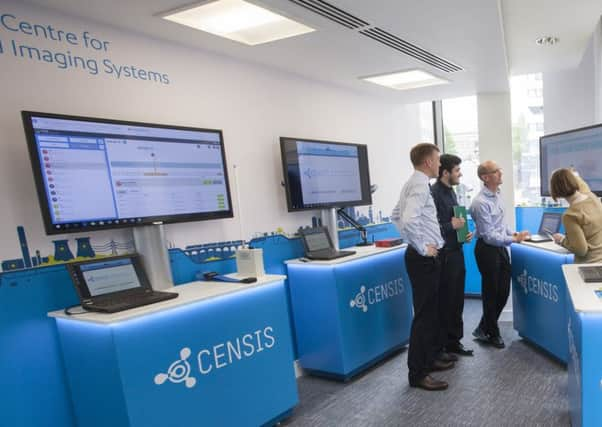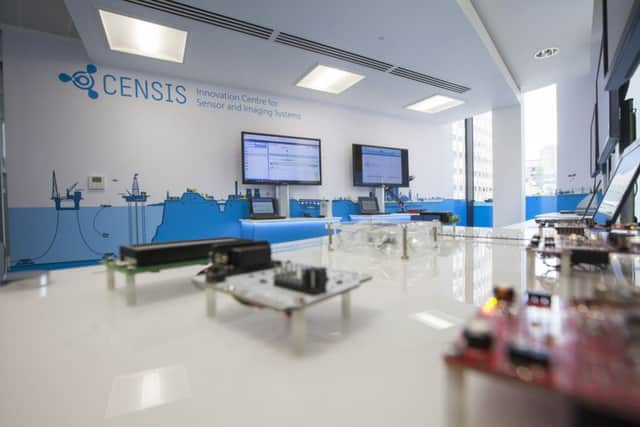Censis helps Scots firms embrace the Internet of Things


It’s a familiar scene in any urban area. But unbeknown to passersby, this particular vehicle is playing a small role in the expansion of the Internet of Things (IoT) taking place across the country.
Attached to the van’s roof is a remote air quality monitoring system, which sends real-time data to a computer in the Inovo Building - a sleek office development next to the University of Strathclyde.
Advertisement
Hide AdAdvertisement
Hide AdThis is the home of Censis - the Scottish Centre for Sensors and Imaging Systems - and the mobile monitoring project is just one of numerous schemes it has helped develop since opening in 2013.


“If you have a fixed air quality station you’re only gathering data from that one location,” said Dr Mark Begbie, business development director. “What we’re doing is capturing a much richer set of data over time.”
Monitoring air pollution is a serious business, with local authorities across the UK consicious they could face fines or legal action if certain roads breach standards.
Censis has already held talks with interested councils both north and south of the border as a result.
The potential of sensors and imaging systems to record data and improve efficiency in all walks of life - from businesses to the home - has become one of the major tech talking points over the past decade.


Censis aims to bridge the gap between university research and industrial uptake north of the border and assists SMEs to grow beyond initial models quickly.
There are about 170 companies in Scotland with a focus on sensors and imaging systems, a key area of technology for sectors ranging from agriculture, food and drink to defence, life sciences and transport.
But not all of the firms who visit the Censis demonstration centre at the Inovo Building are IoT experts.
Advertisement
Hide AdAdvertisement
Hide Ad“A lot of companies we deal with are not from the tech sector,” said technical director Dr Graham Kerr.
“They’re broadly aware of the direction of IoT, but they don’t know the nuts and bolts of it. We can parachute in the technical ability to get them to a demonstration market trial.
“We act as a bridge between academia and industry, but often we get industry coming in themselves wanting to find out more. We work with people who have a product they want to take to the next stage.
“A lot of SMES are looking for next stage funding. It’s always better to have something to show and tell rather than a PowerPoint presentation.
“In terms of collaborative research with universities, we’re now up to our 50th project.”
Among the SMEs to link-up with Censis is Livingston-based Sensor Works. The collaboration has led to a vibration monitor aimed at the industrial machinery market.
“If you’re monitoring vibrations, you are able to predict when something will go wrong,” added Dr Kerr.
“It’s a bit like a mechanic at a garage listening to your car’s engine. Thanks to data, you can move from reactive repair to proactive maintenance.”
Advertisement
Hide AdAdvertisement
Hide AdWhile immensely practical and of huge benefit to business, such systems may not excite the general public keen to see IoT improve more domestic appliances.
Like all tech innovations, IoT is subject to the hype cycle, explains Dr Begbie.
“Technologies emerging from IoT are probably at the peak of hype - but the capabilities have not caught up yet,” he said.
“IoT has been climbing to the peak of the hype curve.
“IoT doesn’t mean having a fridge that tells you it’s out of milk - it’s about the millions or billions of small devices scattered around capable of recording data.
“They have little ability to process anything. They need to be wirelessly connected and battery powered. Developing batteries with 10-year life spans is the challenge.”
“We’re still a young organisation,” Dr Kerr added. “It will be a few years until you really see what we’re doing coming to fruition.”